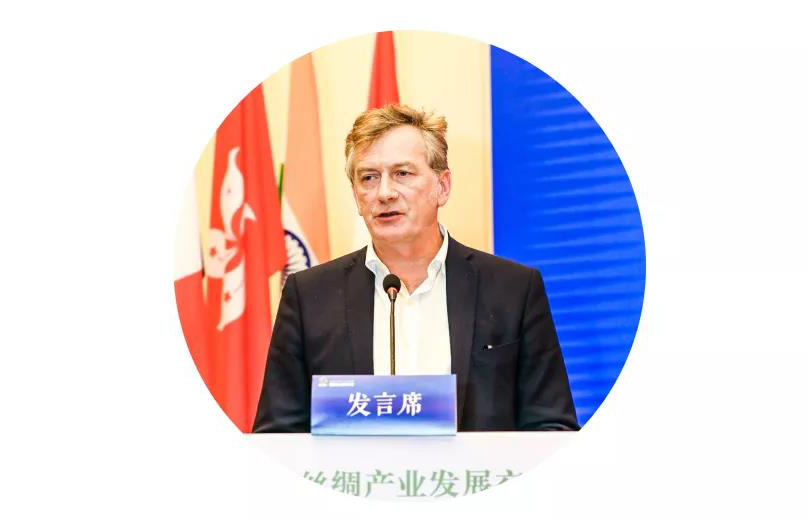The Situation of Silk in France and the Main Challenges

Mr. MERMET Frédéric
Executive director of INTERSOIE France
Ladies and gentlemen,
Good afternoon to you all,
I am glad to have the opportunity of meeting the representatives of Chinese silk industry and their international guests, who are attending ISU Silk Seminar today.
I’m taking the floor on behalf of Mr Xavier Lepingle, who is the President of INTERSOIE France, the association which comprises all the leading textile silk companies in France. I’m talking here representing French silk industry, which plays a key role in Europe and in the world.
In France, the heart of this industry is concentrated in Lyon and its region, employing over 4,000 local workers, in a large number of SMEs including subsidiaries of prestigious luxury brands.
For more than five centuries, Lyon silk industry is involved in high end fashion products, furnishing textiles and luxury textiles, maintaining excellence in silk know-how and remarkable creativity all over the world.
All the main processes for Luxury market and the silk creative industry are carried out in France or more generally in Europe, except sericulture and reeling. Certain techniques such as silk weaving, throwing, printing, as well as dyeing are well represented in the Lyon silk industry.
In 2018, around 400 tonnes of raw silk and thrown silk were imported and processed in the Lyon area. This supply from Brazil and China concerns only silk of the highest quality (5A or 6A grade). Also 300 tonnes of greige fabrics were also imported to be dyed or printed in France.
Historically, French silk fabrics as well as manufactured silk goods are exported around the globe. 2018, the French silk industry performed well in exporting silk fabrics (more than 56 million Euros, increasing by 10% in 2018). Then, exports of manufactured silk goods amounted 156 million Euros, increasing significantly by 22%.
What are the main challenges of the French silk industry? Three main challenges can be drawn:
1. Firstly: To enhance internationalization and open business opportunities outside the EU through free trade agreements, and thanks to more level playing field for international trade.
2. Secondly: To strive for the improvement of international quality standards due to the constantly increasing demand for the highest quality of raw silk. A new classification based on the electronic test method is needed, closely linked to the technical requirements of the luxury market. This classification based on objective measurements has to be the new language in the customer and supplier relationships, allowing to determine the right price of the raw silk lot in relation with its quality level. Moreover, this new classification has to take into account new issues such as CSR, i.e. social and sustainable requirements (sustainability, environmental protection, customer protection, social relations).
3. Last but not least, the third challenge concerns the future issues: More sustainable business models, circular economy, digital technologies enabling customization… French and European silk manufacturers would like to be an exemplary role model and to be part of that tradition of constant innovation in order to promote sustainable development. As identified in the United Nation COP 2015 Paris Agreement there is an urgent imperative for global efforts to tackle climate change and environmental damage from major industrial activities. Corporate strategies of key luxury groups must have embedded sustainability. For example, on the occasion of the G7 Summit held on August 2019, President Macron - the French Republic President - expressed request to CEOs for their commitments: to tackle climate change, for environmental damage to biodiversity and oceans. Moreover, new values-led consumerism has emerged: the younger generation of millennials are passionate about social and environmental issue.
In that context, we are convinced that silk manufacturers are key players in creating change. They have been able to deal successfully to always changing expectations of their customers. We are also convinced that the silk fiber lends itself on sustainability.
In conclusion, we think that ISU has a future role to play in promoting the silk fiber, sharing ideas to meet these challenges, helping to enhance best practices and improving international relations and collaboration among silk players in the world.

